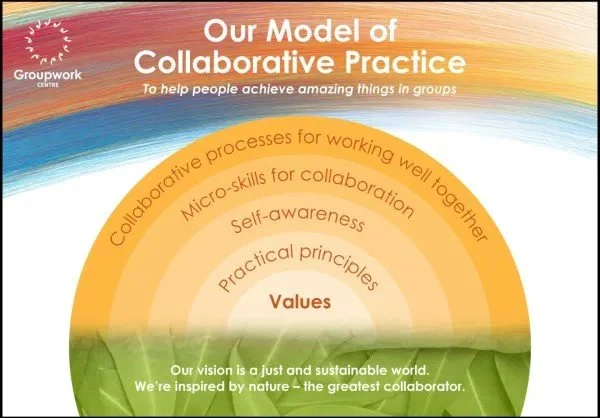Making Magic
Written by Nancy Nuñez
What does good collaboration look like? Nancy Nuñez reflects on a maternal health project in Melbourne’s west that could be a model for others
There’s nothing quite like being part of a group that’s humming along and making tangible progress towards its goals. This is the magic that we facilitators know can happen when we get things right.
I recently had the privilege of being involved in the Strong Families Strong Babies project, where I was part of a successful collaboration. This project, delivered over two years, was a partnership between many agencies aiming to improve birth outcomes for families in the Melton South region of Melbourne.
Project leaders, the Murdoch Childrens Research Institute (MCRI), had identified significant pockets of social isolation, poor mental health and gender-based violence in the community. These factors are known to influence the health and wellbeing of babies and mums. The project aimed to help local agencies address these problems to improve outcomes for young families.
Groupwork Centre was invited to be involved and I signed on to train and support the facilitators who work with the mums. From its inception, the project placed collaboration at its core, using our collaboration model as its guiding star.
Start with values
As such this project began with the articulation of clear values and principles. By keeping the human element at its centre, they were able to put in place practical processes that would support people to work well together along the way. They did this by strengthening connections between participants and building rewarding relationships.
As the MCRI team said in its evaluation, “The Groupwork Model of Collaborative Practice informed the way the MCRI team facilitated partnership meetings as well as the design and implementation of practice change initiatives.” These initiatives included a perinatal support group for Punjabi-speaking women and a Peer Learning Circle for staff who were supporting the group.
Groupwork provided tailored training to the agencies involved that included facilitations skills, working across differences, rank and power, and working cross culturally.
Once training was completed, the core team, comprising a maternal health nurse, a bi-cultural worker and a midwife, co-facilitated sessions for staff supporting the Punjabi-speaking women.
For the first six months, in between these sessions the core team and myself would meet for a Peer Learning Circle, where we created the space for co-facilitators to reflect on their previous session. They identified challenges they wanted to address such as tricky group dynamics, co-facilitation issues, how to equalise power and facilitating when content is being translated into another language.
We also used this time to prepare sessions, ensuring the feedback and lessons from previous sessions were taken into account so we were constantly striving for improvement. It was wonderful to see in those six months the growth in confidence in the core team and their willingness to discuss and address the challenges they faced as well as their unwavering commitment to continuous improvement.
The benefits of this way of working were not only evident in the facilitators but also in the participants, who often provided feedback about their sense of belonging and sense of safety.
The report produced by MCRI (see link below) shows that collaboration done well, pays off. It makes our work more effective, our reach bigger and our impact greater. Part of it is the understanding and acknowledgement that everyone involved has something valuable to add to the equation.
Collaboration begins by being clear about the values and principles that are driving you and clarity about purpose – what is it that we want to achieve?
Essentials of collaboration
To do collaboration well we also need to create the environment for people to work well together. This includes:
Regular opportunities for connection – connected people do better work
An awareness that we bring all of our selves and our humanness to the spaces we are in
Building skills so people can communicate effectively, so they can have courageous conversations and navigate working across differences
A shared understanding that difference or difference of opinion is not only OK and welcomed but necessary to find better ways to do things
Although doing true collaboration might take longer to start with, it’s certainly worth the effort. It becomes less time consuming as we get better at it until eventually it comes naturally and smoothly.
For more information about this project see the Evidence Brief.

